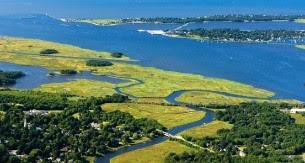
Milestones from 2010 to 2020
New York State has, over the last decade, passed new laws and instituted new procedures to protect New York's water supply and its quality.
Did you know?
In 2011, the Water Resources Law was updated to protect New York's waters, including the Great Lakes, by requiring a DEC permit for any type of water withdrawal system having the capacity to withdraw 100,000 gallons per day (GPD) or more of surface water or groundwater. Recently DEC added downloadable annual water withdrawal reports to the DECinfo Locator, the agency's interactive data application, to provide easy access to information about public water supply systems that have the ability to withdraw 100,000 gallons or more per day.
In 2012, New York State enacted the Nutrient Runoff Law to reduce phosphorus runoff from fertilized lawns. Phosphorus is one of the leading causes of water pollution.
In 2013, the Sewage Pollution Right to Know (SPRTK) Act took effect. The SPRTK Act requires untreated and partially treated sewage discharges to be reported by publicly owned treatment works (POTWs) and publicly owned sewer systems (POSSs) within two hours of discovery to DEC and within four hours of discovery to the public and adjoining municipalities. To receive these reports electronically through NY-Alert, follow the instructions for registering on DEC’s website.
In 2017, New York passed the $2.5 billion Clean Water Infrastructure Act to invest in drinking water infrastructure, clean water infrastructure, and water quality protection. DEC’s Water Quality Improvement Project program has used a portion of this funding annually to help pay for wastewater treatment improvements, new salt storage facilities, and the purchase of land or easements to protect drinking water.
In 2018, Governor Andrew M. Cuomo announced a $65 million initiative to aggressively combat harmful algal blooms (HABs) in Upstate New York. Twelve priority lakes that are vulnerable to HABs and are critical sources of drinking water and vital tourism drivers were chosen as priority waterbodies because they represent a wide range of conditions and vulnerabilities, and the lessons learned could be applied to other impacted waterbodies. The initiative included four Regional Summits of experts and local stakeholders that were held in early 2018 and the development and implementation of action plans to identify and reduce HABs causes. DEC continues to support the implementation of the HABs action plans through its grant programs.